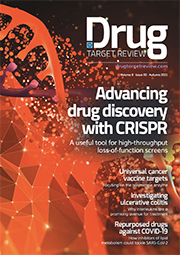Automated assessment of Liver and Cardiac toxicities in lead optimisation, using biochemical and human iPS cell assays
ABOUT THIS WEBINAR:
In this two-part webinar, both automation of P450 (CYP) assays and the automatisation of cellular differentiation processes and compound testing using human induced pluripotent stem cells based assays was covered.
Metabolism of drugs is a key factor in compound toxicity, and automated assays which monitor inhibition or induction of members of the cytochrome P450 (CYP) superfamily of enzymes are a key ADME readout during lead optimisation.
This webinar will describe a 384-well microplate format assay using three different CYP enzymes, with two approaches, illustrating a typical assay run in an ADME laboratory. The CYP profiling was performed on the Fluent 780 assay workstation in an automation process designed to reduce reagent consumption and make tip usage as efficient as possible. Prediction of toxicity of small molecule chemicals is essential during drug development and evaluation of industrial chemicals. Human induced pluripotent stem cells (hiPSC) and derived cellular products, e.g. hiPSC-derived heart, liver or brain cells, provide new concepts and possibilities to generate tissues that could be physiologically more relevant and therefore predictable and scalable to sufficient quantities for analysis of toxicological features. The automatisation of cellular differentiation processes and compound testing could enable a stable and scalable solution for toxicity assessment.
In the second part of the webinar, adaptation and automatisation of the differentiation process for hiPSC-based cardiomyocytes will be discussed. The differentiation occurs directly in 96-well format screening plates. Moreover, two endpoint assays – based on ATP detection and intracellular calcium transient visualisation – for the cardiotoxicity assessment were adapted and automated in addition to performing manual beating analysis. As proof-of-concept to evaluate the established platform, inhibitors of the non-selective cation channel TRPM4, which are currently being developed at Fraunhofer IME to target the neurodegenerative disease multiple sclerosis, were tested using the platform technology presented here. We have shown that hiPSC-cardiomyocytes express TRPM4 after a 14-day differentiation protocol to a similar extend than human cardiomyocytes from explants. The presented automated system therefore appears to be suitable for assessing both toxicity and impacts on functional performance of human cardiomyocytes in early stage drug discovery or similar applications.
The rest of this content is restricted - login or subscribe free to access


Why subscribe? Join our growing community of thousands of industry professionals and gain access to:
- quarterly issues in print and/or digital format
- case studies, whitepapers, webinars and industry-leading content
- breaking news and features
- our extensive online archive of thousands of articles and years of past issues
- ...And it's all free!
Click here to Subscribe today Login here
Related topics
Assays, Drug Discovery Processes, Hit-to-Lead, Lab Automation, Personalised Medicine, Screening, Stem Cells, Translational Science
Related organisations
Tecan




